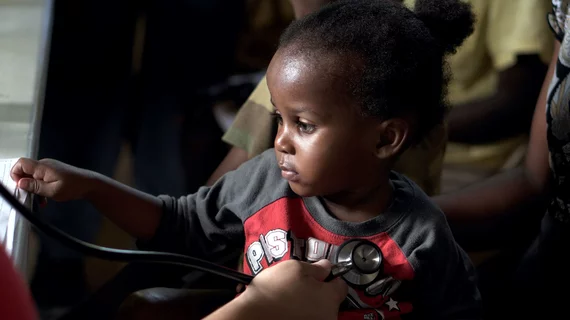Radiologists call for standardized imaging criteria for diagnosing pancreatitis in children
A recent analysis of interobserver agreement when diagnosing chronic pediatric pancreatitis has raised some concerns about the need for more standardized diagnostic criteria.
The retrospective evaluations, published in the American Journal of Roentgenology, revealed only fair to moderate interobserver agreement among six pediatric radiologists, who interpreted the CT and MRI scans of 110 children with the disease.
“Given the importance of imaging in clinical care and research related to chronic pancreatitis, it is essential to define interobserver agreement for imaging findings,” first author Andrew T. Trout, MD, from the department of radiology at Cincinnati Children's Hospital Medical Center in Ohio, and colleagues explained. “This knowledge would guide selection of criteria for chronic pancreatitis diagnosis and staging, likely favoring criteria with the highest levels of agreement.”
Six sites participating in the International Study Group of Pediatric Pancreatitis: In search for a cuRE (INSPPIRE) consortium submitted the images. Three of the board-certified radiologists read only CT scans, while the other three interpreted only MRIs. The radiologists measured duct diameter and pancreas thickness, in addition to recording 13 categorical findings of chronic pancreatitis.
On CT, interobserver agreement was favorable for the findings of parenchymal calcifications, pancreatic duct dilation and atrophy. Agreement was also fairly high on MRI for main duct irregularity, side branch dilation, number of dilated side branches and main duct dilation.
In contrast, agreement for the subjective finding of atrophy was considered moderate, as it was for parenchymal thickness also. Of note, the agreement for parenchymal thickness largely depended on the location of the measurement, with the highest agreement being achieved in the pancreatic body.
“We have shown that most subjective imaging features of chronic pancreatitis have only fair to moderate agreement among experienced pediatric radiologists,” the experts wrote. “If subjective criteria are used, specific definitions are needed, and those definitions need to be developed specifically for children.”
Given the implications of chronic pancreatitis in children, including loss of pancreatic function, the researchers urged for further studies, ideally with larger samples of children, to develop standardized or objective criteria for the diagnosis.
More on pediatric imaging:
Deep learning-based reconstruction reduces pediatric CT dose by 54%, maintains image quality
Cooperation during pediatric MRIs improves with parental participation, study shows
LEGO's miniature MRI models help comfort nervous kids before exams

